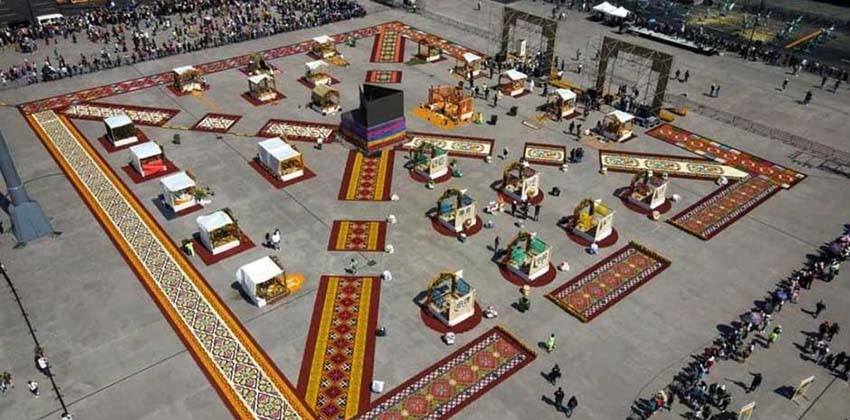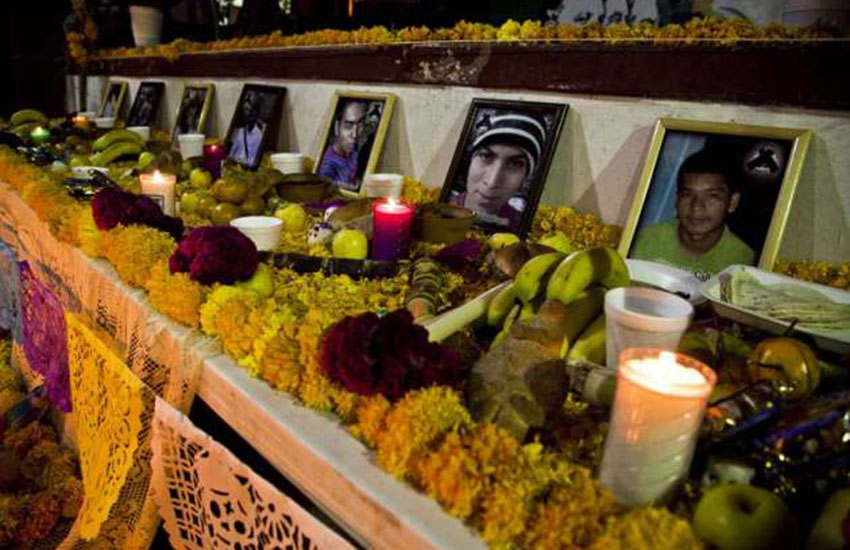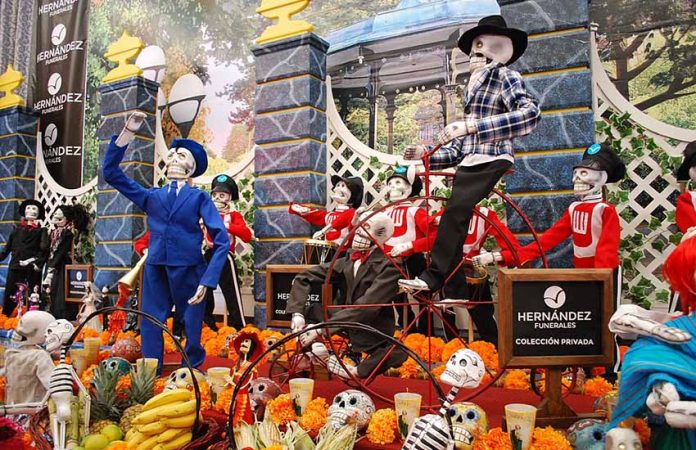One of the most ubiquitous manifestations of Day of the Dead is the ofrenda, a word that can be translated both as “altar” and “offering” because it is indeed both.
These highly decorated tables filled with food, photos, candles, whimsical figures and more have their origins in the Mesoamerican belief that the dead return home once a year. Mexicans prepare for that occasion not in dread but rather as a family reunion.
The ritual is millennia old, but it has seen some significant changes in the past century. Essentially, it has been extended from a home or small-community ritual to a major expression of mexicanidad or Mexican identity.
Despite its connection with the afterworld, Day of the Dead altars are not considered religious and are not part of official Catholic rites. They developed as one of many examples of syncretism between indigenous and European beliefs.

Ofrendas are set up not only in homes but also in more public places like cemeteries. Graves are cleaned and repaired for the occasion, and many families spend hours here, sometimes even the night.
Other notable locations can host ofrendas as well, the most famous of which is Lake Pátzcuaro in Michoacán.
The rise of setting up ofrendas in public spaces has much to do with the federal government’s promotion of a concept of Mexican identity promoted after the Revolution. The new government’s Education Ministry allied with artists and others starting in the 1920s to promote a national identity based on indigenous as well as European roots.
This might seem obvious today, but back then, it was a radical idea.
Among many other elements of traditional culture, images of ofrendas found their way into art and publications, and the altars themselves began to appear in schools and other public places.
But why has this particular expression of mexicanidad become so popular all over Mexico and even beyond?
First, you do not need to believe that spirits literally return on November 2 to find significance in remembering lost loved ones. Being mostly divorced from its religious roots and crossing many social and ethnic lines, ofrendas can exist in more secular situations and supported by public entities.
In essence, ofrendas found in schools, museums and government buildings are a cultural and social activity meant to emphasize shared bonds.
Until the 1980s, these altars were not common in northern Mexico because norteños have a different pre-Hispanic heritage and a modern culture more influenced by Mexico’s northern neighbor. But with a strong rise in the popularity of Halloween, federal cultural authorities were alarmed.
A new push to promote Day of the Dead was initiated, with public altars serving as focal points for community activities as an alternative to a “degenerate” gringo party.
The effort has been largely successful. The holiday is part of the Mexican consciousness in all parts of the country, even if the north still keeps certain aspects of Halloween such as costumes.
Public ofrendas are based on the ones that have been built in homes for millenia, especially in areas still maintaining strong local traditions. They are most often sponsored by a local government, which provides at least materials and sometimes labor.
These ofrendas are larger than their home counterparts, and depending on budget, can be monumental, covering entire plazas. But these altars are not always large-scale. Authorities may decide to make substitutions, such as lights instead of candles, for safety reasons. More striking, perhaps, is the addition of new elements.
Photos of notables who have recently died, as well as images related to local and national history are natural extensions of the traditional ofrenda concept. The appearance of elements related to the local economy is not uncommon either, especially if that commodity is a foodstuff.
The popularity of animated skeletal figures means that these altars can also pay homage to local dance and other culturally important activities.
In central Mexico, ofrendas can be surrounded by intricate arrangements of colored sawdust and other materials to create temporary “carpets,” a tradition taken from processions. In areas where Day of the Dead activities are relatively recent, ofrendas are more likely to integrate decorations made of plastics and other modern materials and even include light and sound displays.

In some cases, politics and social issues can find their way onto public ofrendas. Especially at universities, it is not uncommon to see references to tragedies such as the Tlatelolco Massacre and the 43 missing students from the Ayontzinapa Rural Teachers College.
Many 2021 altars had sections or more dedicated to the Covid-19 pandemic and its victims.
Ofrendas and accompanying events are also important, like it or not, because of tourism.
Cities large and small have found the altars an effective way to attract visitors, prompting city officials to invest more in them. In some places, this can include the hiring of professional altar makers, such as Rodolfo Villena Hernández of Puebla, whose main commission this year is an ofrenda in Puebla city dedicated to the state’s gastronomy.
Mexico City’s public ofrendas are representative of most in the country. The two most important are located in the city’s zócalo and at the National Autonomous University (UNAM) at Plaza Santo Domingo. Both are conglomerates of individual altars bound together by a theme.
This year, the theme of the altar in the main zocalo is “celebrating life,” a nod to surviving the pandemic. The one in UNAM honors 100 years of muralism in Mexico.
Most cities follow suit often with regional variations on public spots. The ofrenda at the University of Guanajuato, for example, is set up on its iconic library stairs. Another popular place are large city parks, such as Calvarlandia in Guadalajara’s Parque Metropolitano.
Despite the great effort and expense that goes into them, public altars are generally up only from October 31 to November 2. That will likely change, but for now, make your plans to visit them early.
Leigh Thelmadatter arrived in Mexico 18 years ago and fell in love with the land and the culture in particular its handcrafts and art. She is the author of Mexican Cartonería: Paper, Paste and Fiesta (Schiffer 2019). Her culture column appears regularly on Mexico News Daily.
